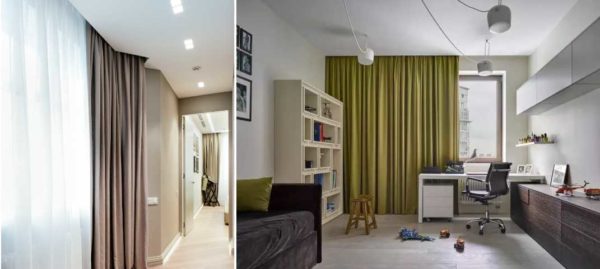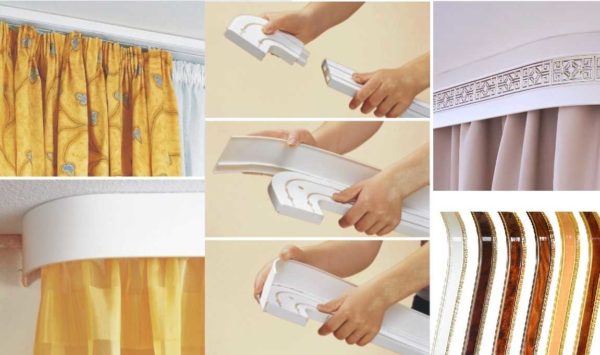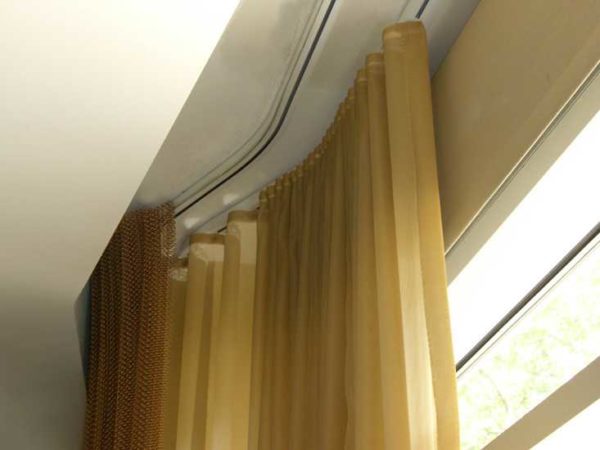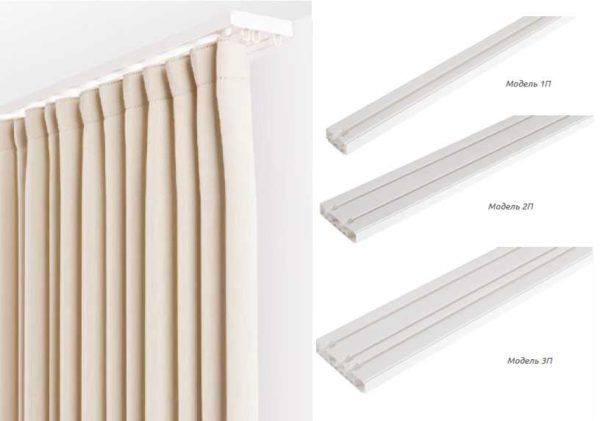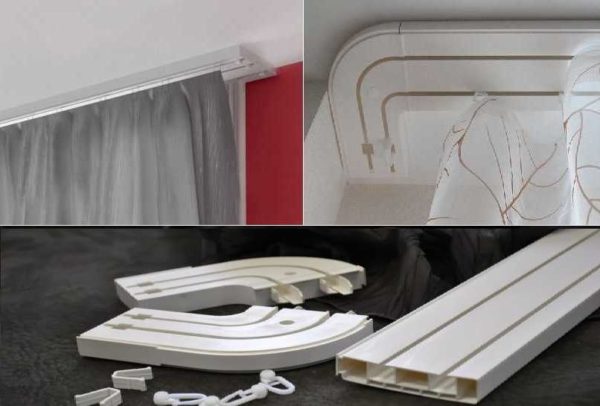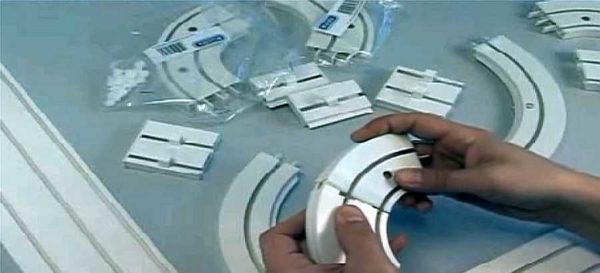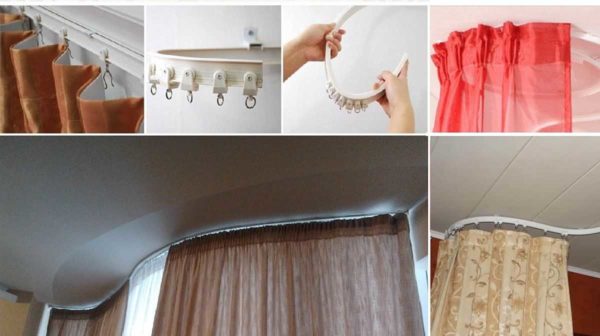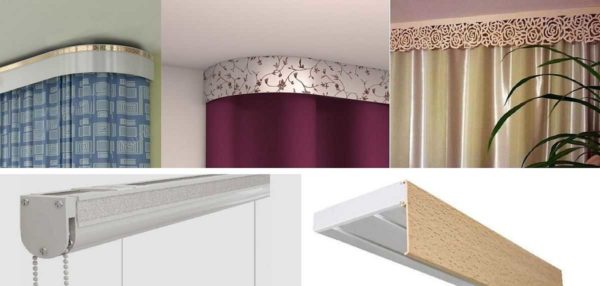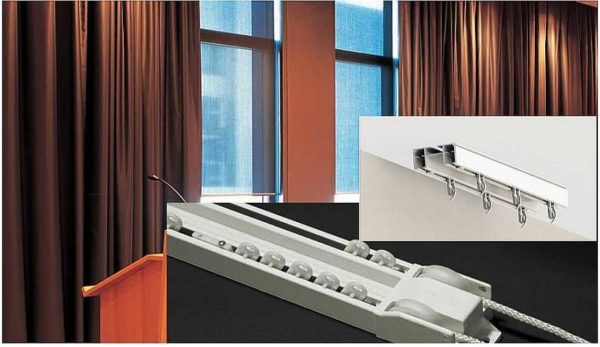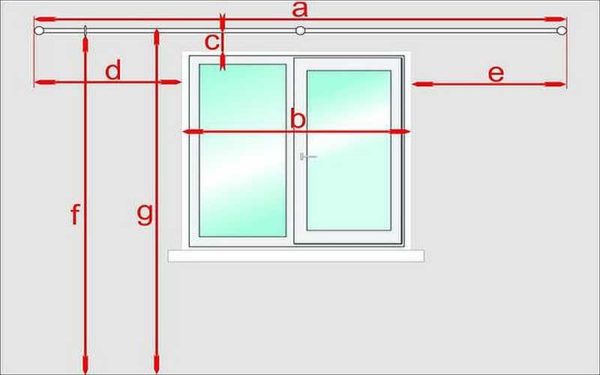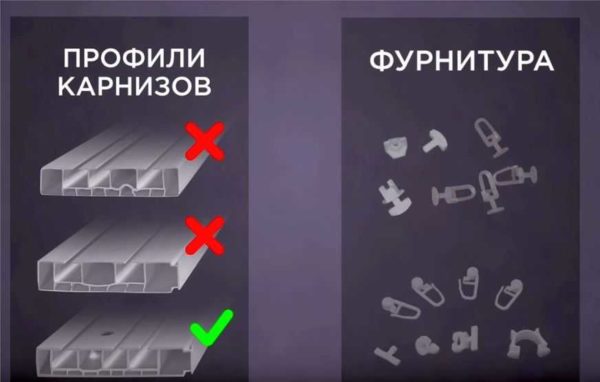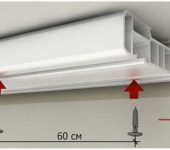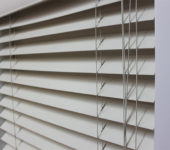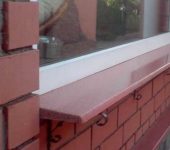Ceiling cornices for curtains: types, sizes, installation
Window decoration helps to make the room comfortable and cozy. And the design of window openings also has its own trends. Last - curtains from ceiling to floor. For implementation, you will need ceiling cornices. Let's talk about what they are.
The content of the article
Advantages and disadvantages of ceiling cornices
Ceiling cornices are called cornices that are attached to the ceiling and they are becoming more and more popular and here's why. First, the cornice on the ceiling visually makes the ceilings higher, because there is no horizontal division, which gives such an effect.
The second point is that you can drape the entire plane from one wall to another and from floor to ceiling. If the window is in the short wall of a long room, it looks more attractive.
Third plus. Since the curtains on the ceiling cornice cover the entire opening in height, the absence of cracks makes the darkening almost ideal. And the "accompanying" positive point - you can hide the heating risers, which are usually located near the window.
There are other pluses:
- Variety of design. There is an invisible version, neutral and with a decorative strip. This strip is attached to a special panel on the front of the eaves. It can be of any kind and style. This allows you to design the window in the desired style. For example, use flexible, metal-painted plastic tape. This is an option for high-tech style and the like. You can use an ornamental overlay. This option is good both for ethnic styles and for classics and even "palace" interiors.
- Curtains move well (if you use quality products).
- You can make curtains with controls. It is mechanical - a chain that you have to pull to close or open the curtains. There is an automatic one - using the control panel.
- Any length. Usually, the ceiling curtain rod goes in a piece up to 4 meters, but there are connectors that allow you to increase the length to the required one.
- Curved lines are easily realized. For this, there are either special flexible ceiling cornices, which can be given any shape, or prefabricated, in which the curvatures have a certain radius. They are inserted in the right place using the built-in lock, which does not interfere with the movement of the sliders (in any case, it does not interfere too much).
The only disadvantages are the inconveniences during installation. It is inconvenient to keep your hands raised up, and drilling ceilings in apartments is still a pleasure. The disadvantages also include the complexity of installation in the presence of stretch ceilings. If they are only planned, anything is possible. If you already have it, there's nothing you can do about it.
Types and types
According to the number of runners along which curtains can move, ceiling cornices are single-row, double-row, three-row. In fact, you can find a structure with seven runners - for complex structures, but the listed ones are the most common.
Constructions
Ceiling curtain rods can be of several types:
- string (cable);
- profile (bus)
- plastic;
- aluminum.
The construction of the strings is simple and straightforward.There are two fasteners, a long thin steel (less often nylon) cord on which the hooks slide. The number of strings is from one to three. These options are good for minimalist interiors. They are also used if the cornice is not visible: in the niches of plasterboard or stretch ceilings, behind decorative overlays. It is also the cheapest and at the same time functional option.
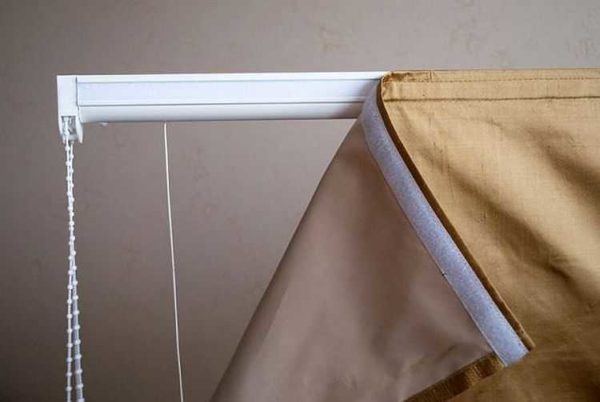
Ceiling cornices for curtains of a profile type can be with control and velcro for a lambrequin or decorative strip
Profile ceiling cornices have a plastic or aluminum body in which grooves are formed. Sometimes they are called "rails" because they are very similar in purpose. Hooks of a special shape are inserted into the grooves. There are also sliders. They are distinguished by the presence of rotating wheels. The second option is more expensive, but they also move much easier. The curtains are attached to these runners / hooks.
There are models of the usual cornices with pipes, but which are attached to the ceiling. Even the simplest design looks completely different. This option can also be used in modern interiors. But with complex shapes of windows and balconies - in bay windows and other layout features - difficulties will arise with such cornices.
Rounded edges (baguette ceiling cornices)
If the window is on a long wall, or wall-to-wall curtains are not part of your plans, the plank should be only slightly wider than the window. But not everyone likes this "unfinished" look, and for such cases there are roundings for the corners. They can be in several versions. Plastic ceiling cornices have special inserts with a certain radius. Available for right and left turns. They are made so that a curtain (curtain) can go behind a turn.
Corpus ceiling cornices with rounded ends have a different device. The rails themselves, along which the curtains move, are straight, and the decorative strip, which is placed in front of them, can be rounded (in the photo below).
There is also such an option as flexible ceiling cornices. They can be bent as you like, but they are not very convenient to use. Too elastic material is not what is required for these products, so we recommend using this type of ceiling cornice only if you have not found other options.
For bay windows (rounded)
Plastic curtain rods can also be called modular. They consist of a set of elements with which you can assemble a structure of the required shape. It's just not very convenient that not every corner can be assembled. Nevertheless, even with such a set, you can assemble a ceiling cornice for a bay window.
The second option for a bay window is a flexible ceiling cornice. This is a profile made of a special polymer, which with sufficient vertical rigidity in the horizontal plane can bend as you like. Of course, there is a minimum bend radius, but it is not too large. Depends on the specific brand and firm, but usually less than 10 cm. This is enough for a bay window of any shape.
It may come in handy on the balcony, in the attic and wherever there are non-standard designs that it is desirable to cover with curtains. With the help of a flexible ceiling cornice, you can organize a canopy for the bed, attach a curtain that will separate one part of the room from another.
With decorative strip (front molding)
If you are considering curtain rails as decoration, you will love the idea of a ceiling cornice with decorative strip. To install the trim strip, either adhesive tape can be attached to the front side or a groove can be made.
If adhesive tape is already attached to the ceiling cornice, you can sew a finishing strip from curtain material or from decorative fabric that is found in the design of the room. In general, which one you like best or suits best.
There is another option (in the photo, bottom right picture). There are grooves along the body of the cornice, due to which a plastic decorative tape is attached. In this case, the choice is limited: you can choose from what the manufacturer of a particular curtain rod offers. True, there is an option: to glue the same adhesive tape to the end, the counterpart - to plastic and fasten it as in the first option.
Plastic or aluminum
There are plastic and aluminum ceiling curtain rods on sale. If we compare these two materials, of course, metal is more reliable and stronger, withstands heavy loads. But if you use light curtains and curtains, it is quite possible to put plastic. You just need to look with thick walls and it is better to see and hold it in your hands so that you can evaluate the thickness of the walls and the quality of the casting.
Aluminum ceiling curtain rods are much more expensive, and with light curtains, a margin of safety is simply not needed. Although, of course, they can be used for many years. This cannot be said about plastic, but the costs are several times less. In general, it's up to you.
If the curtains are made of heavy material, then you will need aluminum ceiling cornices. Moreover, in the description, look for an indication that they are intended specifically for heavy curtains. Their hooks-runners are more powerful, the profiles are made of thicker metal, the fasteners have a larger support area and they must be fixed with a larger number of dowels. In general, ceiling curtain rods for heavy curtains are reinforced.
How to determine the size
If you want the curtains to be from wall to wall, then the cornice should be almost the same length. It can be 10 cm shorter, but it can be close. If you are only going to close the window, then the length of the cornice should be at least 50 cm greater than the width of the window opening. More is possible, but less is not desirable.
In general, everyone determines the length for themselves. You can proceed from the following considerations:
- If the window is large, there is more than enough light in the room, you can take the cornice of the minimum length: the width of the window opening + 40 cm (20 cm on each side). In this case, the open curtains will slightly overlap the window.
- If the window is already small and faces north, it is better that at least 30 cm remain on the sides. In this case, even thick curtains in the assembled state will fit on the side of the window.
- Two windows on one wall with a small partition. It is best to make one long curtain holder. It will look much more modern.
There is one point to consider when choosing the length of the ceiling cornice. It must be fixed so that the farthest row of curtains (tulle) does not touch the heating radiators. This should be taken into account, because not all of our rooms have perfect geometry.
How to choose a plastic ceiling cornice
Decide immediately on the level of complexity of the curtains. Depending on this, choose the number of rows in the profile. If there is only tulle, you need a single-row; if there is tulle and curtains, you need a double-row. Or you may want to have curtains of different densities - thicker for perfect blackout. Then you need a three-row cornice on the ceiling.
Further, we pay attention to the possibility of attaching a decorative strip. If the installation will be hidden in a niche, if you do not want to draw attention to the way of attaching the curtains, you need conventional models. If you want to install a decorative strip, you will need appropriate structures.
The next thing we are looking at:
- Wall thickness and casting quality. The thicker the walls, the better. The minimum allowable size is 1 mm.
- The jumpers should be smooth, not blocked up, without bubbles, abnormal holes, etc.
- It is desirable that there are factory mounting holes. Although it is easy to make them yourself, the lack of mounting holes is one of the signs of not very high quality.
If the ceiling cornice is sold packaged, there is no way to look at the wall thickness; you can indirectly estimate the thickness by "weighing" the set on your hands. The more it weighs, the more plastic, the thicker the wall.

